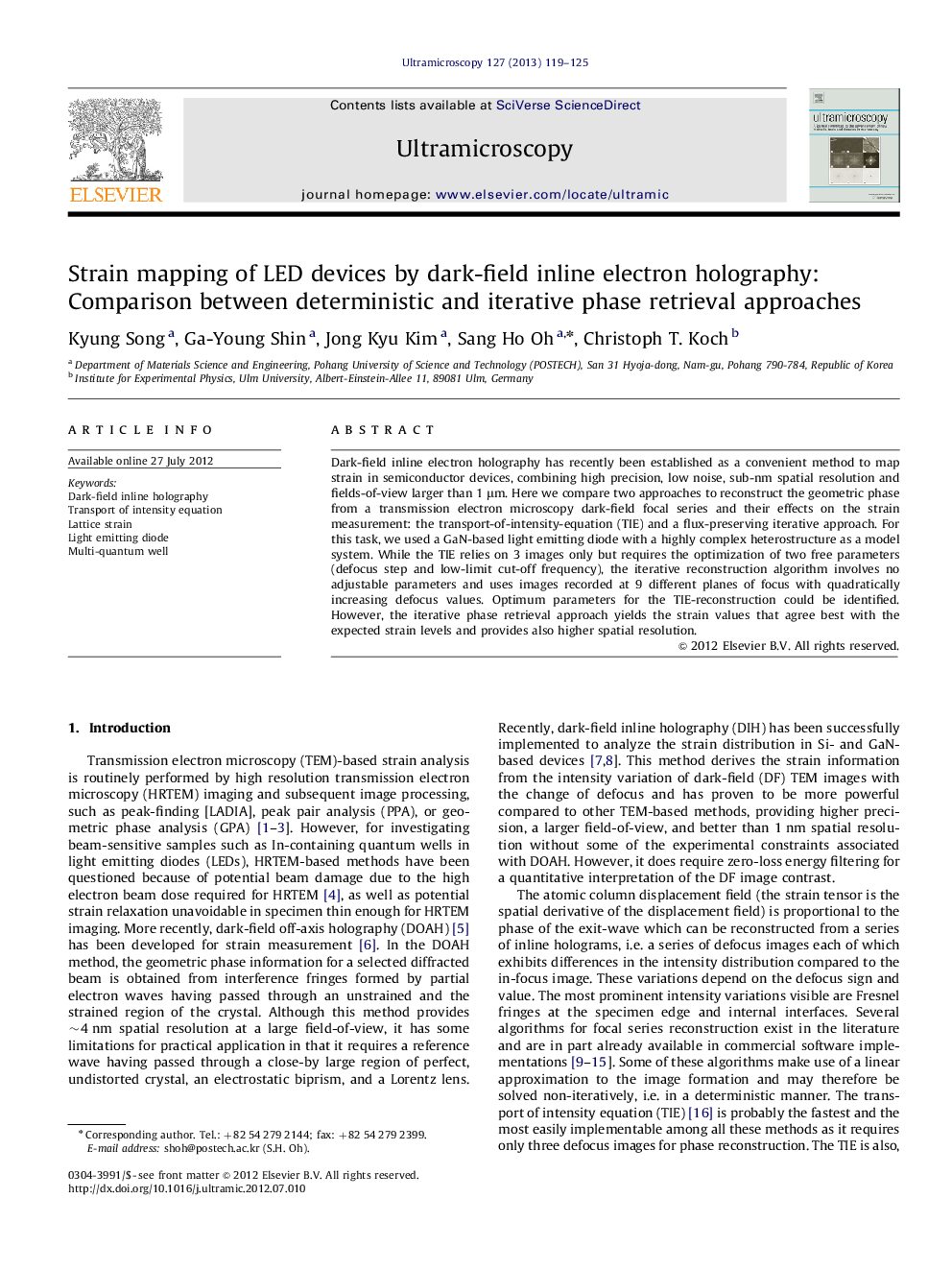| Article ID | Journal | Published Year | Pages | File Type |
|---|---|---|---|---|
| 1677490 | Ultramicroscopy | 2013 | 7 Pages |
Dark-field inline electron holography has recently been established as a convenient method to map strain in semiconductor devices, combining high precision, low noise, sub-nm spatial resolution and fields-of-view larger than 1 μm. Here we compare two approaches to reconstruct the geometric phase from a transmission electron microscopy dark-field focal series and their effects on the strain measurement: the transport-of-intensity-equation (TIE) and a flux-preserving iterative approach. For this task, we used a GaN-based light emitting diode with a highly complex heterostructure as a model system. While the TIE relies on 3 images only but requires the optimization of two free parameters (defocus step and low-limit cut-off frequency), the iterative reconstruction algorithm involves no adjustable parameters and uses images recorded at 9 different planes of focus with quadratically increasing defocus values. Optimum parameters for the TIE-reconstruction could be identified. However, the iterative phase retrieval approach yields the strain values that agree best with the expected strain levels and provides also higher spatial resolution.
